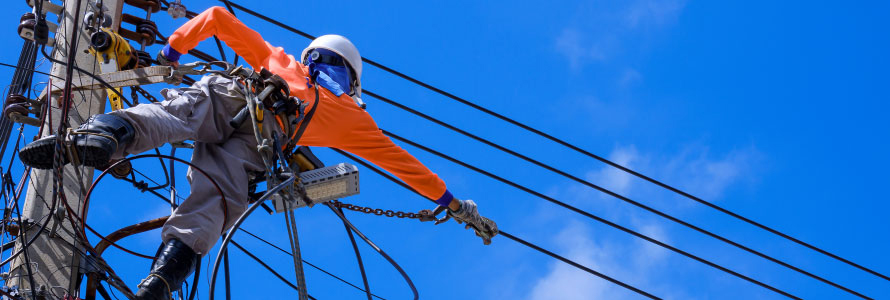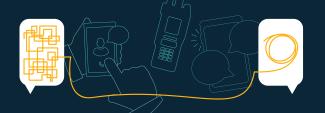Every emergency manager knows a disaster calls for all hands on deck, including the extended community of responders who help public safety in emergencies. This extended community can include utilities, transportation, and other essential services. Because communication is so critical to disaster response and recovery, FirstNet is available to this extended community of responders when needed.
Extended primary users
FirstNet’s primary users are emergency managers, law enforcement, EMS, firefighters, and 9-1-1. The network was designed for public safety users, and they always get the highest level of priority.
But a larger community of people pitch in to help when emergencies happen and need priority communications for those incidents. They are called extended primary users on FirstNet.
Extended primary users can include public works, utilities, schools, and hospitals, among others. They are critical in helping public safety officials prepare, respond, recover, and mitigate incidents that can overwhelm communities.
When an incident occurs, extended primary users work hand-in-hand with public safety officials to restore utility lines, clear roads, clean up debris, or activate during school shootings—and they need the same priority and preemption to communicate effectively.
Unique ability to uplift
A unique public safety feature of FirstNet is the ability to uplift extended primary users during incidents to temporarily give them the same priority on the network as traditional first responders.
When Hurricane Laura made landfall in Louisiana in 2020, the storm damaged critical infrastructure, including gas lines operated by Atmos Energy. Rich Gius, Chief Information Officer for Atmos Energy, reported that uplifting Atmos employees working on the frontline made a difference.
FirstNet’s prioritized service helped Atmos emergency crews to coordinate restoration efforts with first responders and local leaders. Within a week after the hurricane made landfall, all service lines were either repaired, replaced, or marked.
“During emergencies and major weather events, there can be congestion on the regular commercial network,” said Gius. “With FirstNet, Atmos Energy gets priority above most callers. It’s like giving public safety communications the ‘lights and sirens’ treatment.”
Reaching everyone in an emergency
FirstNet is an interoperable network that allows responders to communicate to large groups across agencies and jurisdictions, which is especially important during emergencies.
Carroll County was the first school system in Maryland to implement FirstNet on school buses. The county uses FirstNet’s push-to-talk service to mass communicate, set up talk groups, and contact bus drivers individually or in groups. It’s illegal for drivers to answer the phone while driving. Their new FirstNet devices have microphones, speakers, and one-touch buttons that automatically connect to headquarters.
“FirstNet solved a really big problem for us by giving the county the best possible cellular network for push-to-talk,” said Anita Stubenrauch, the school system’s operations performance manager. “We could rapidly communicate to the entire fleet in an emergency in a way that they could hear without having to violate a law or having to pull their bus over.”
Another benefit is the interoperability with local law enforcement who are primary FirstNet users. The county’s public safety teams can seamlessly communicate with school buses during emergencies.
Sheriff Jim DeWees said, “We’ve had incidents where we needed to get buses rerouted to a particular school, and you have to call the bus carrier and say, ‘Can you get five buses to this school so we can get kids out and transported to another location?” He understands that being able to communicate with all partners in an emergency is paramount to school safety.
Steps for extended primary users
As an emergency manager, you want to make sure that your partners are prepared to respond in any emergency. Here are ways to get started:
- Step 1: Get your extended primary agencies signed up for FirstNet.
- Step 2: Know when and how to uplift extended primary users.
- Determine who is in charge of uplift in your FirstNet Central dashboard. Only primary users can uplift extended primary users, so make sure someone in the emergency operations center or dispatch center is trained and has the right permissions.
- Make sure extended primary partners know who to call and how to request an uplift if needed.
- Step 3: Include your extended primary agencies in trainings and exercises using FirstNet.
- Step 4: Incorporate your partners in communications plans and pre-planned uplift groups in FirstNet Central so they can be easily uplifted during the rush of an emergency.




















